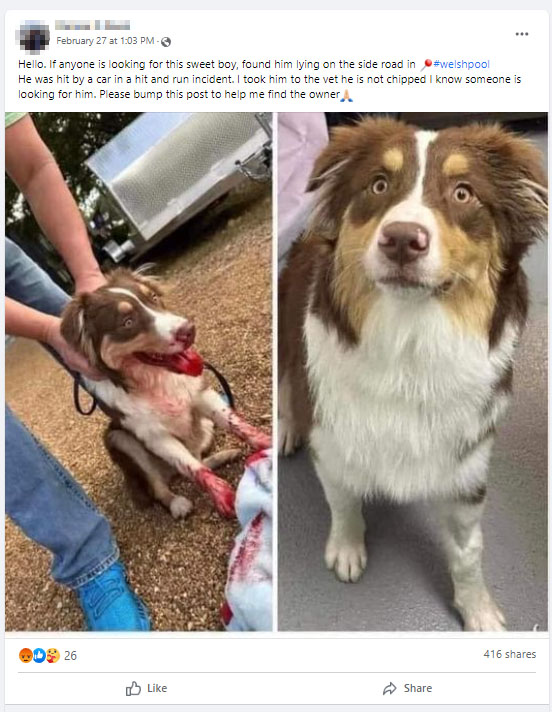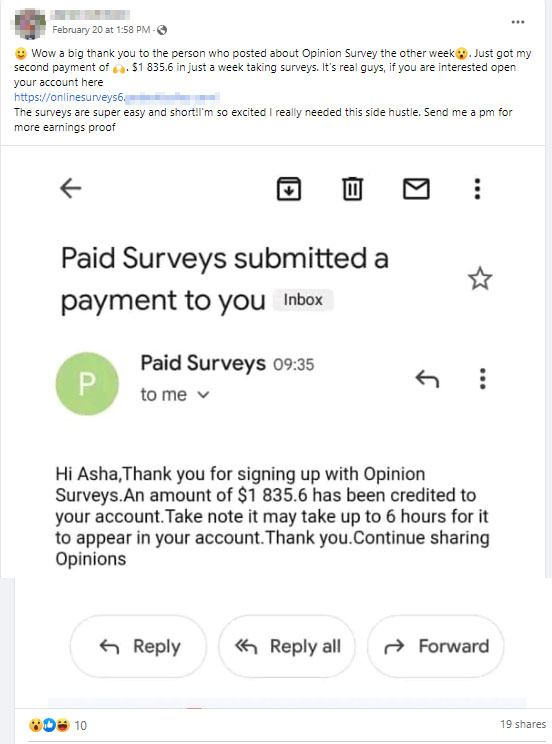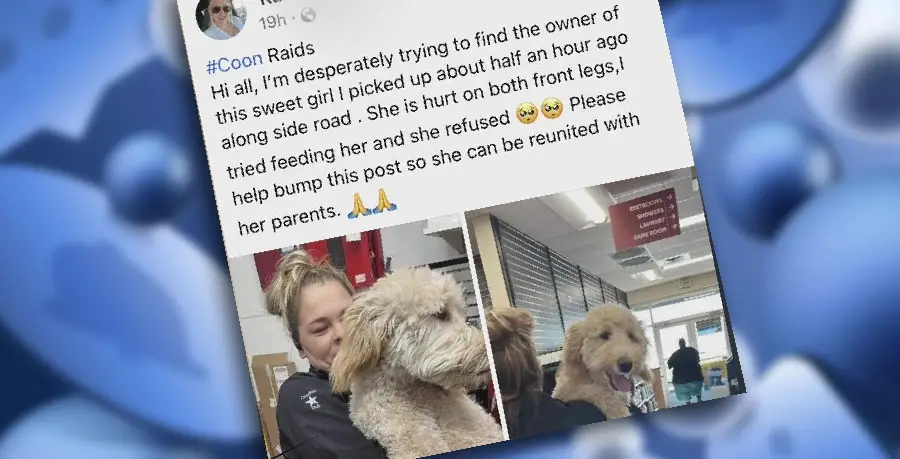Crooks posting Scam “injured pet” posts in Facebook groups
Crooks and spammers on Facebook are exploiting animal lovers with fake injured pet posts to help spread their scams across the social media platform. We discuss how these scams work.
We often use social media platforms like Facebook to get the word out on, for example, lost pets. But crooks are exploiting the high amount of engagement these types of posts typically accumulate by creating fake posts and subsequently editing them to include malicious links once they’ve been shared by well-meaning Facebook users.
The fake posts are often posted on community Facebook groups for towns and villages, including on Buy/Swap/Sell groups. Take the below post for example, which urges Facebook users in a group to share a post that claims an injured pet has been found.

Hello. If anyone is looking for this sweet boy, found him lying on the side road in #welshpool He was hit by a car in a hit and run incident. I took him to the vet he is not chipped I know someone is looking for him. Please bump this post to help me find the owner
It is certainly a convincing ploy. After all, we’d all like to help reunite a lost pet with its owner. And we may think what’s the worst that could happen by simply sharing the post with our friends. What makes it more convincing is that the posts are adapted to include local place names that are relevant to the Facebook community groups in which they’re posted.
However, this is an example of an after-the-fact post editing scam. This is when spammers and crooks create innocent looking posts and then edit them at a later date – often once the post receive a certain amount of shares – so that the post reads entirely differently.
In many cases, spammers edit the posts so they include links to work-from-home scams, or get-rich-quick schemes, or in many cases annoying survey scams that harvest personal information. As example of such as post after it has been edited is below.

Because Facebook users have already shared the posts when they appeared innocent, once they have been edited, it gives the illusion that the Facebook user was sharing the edited post, not the original one.
But readers be aware – these crooks don’t just used injured pet posts to entice Facebook users into engaging. We’ve also seen examples of people posting images of dangerous animals or criminals “in the local area” and posts asking for positive engagement on crafts and artwork, as well as other types of engagement baiting posts.
Sponsored Content. Continued below…
As soon as the posts accumulate enough shares, the crooks edit them so they become malicious or spammy.
It can be difficult to identify these sorts of posts because they can take on many different forms. The best course of action is to simply be wary of posts in local or niche Facebook groups that seem to prioritise garnering engagement, such as shares.
You can also take a look at the person who made the post to see how long ago they created their profile and if the account appears legitimate or fake. And remember, you can always check the history of a post to see if it has been edited before by clicking the three-dotted icon and selecting View Edit History.
Continued below...
Thanks for reading, we hope this article helped, but before you leave us for greener pastures, please help us out.
We're hoping to be totally ad-free by 2025 - after all, no one likes online adverts, and all they do is get in the way and slow everything down. But of course we still have fees and costs to pay, so please, please consider becoming a Facebook supporter! It costs only 0.99p (~$1.30) a month (you can stop at any time) and ensures we can still keep posting Cybersecurity themed content to help keep our communities safe and scam-free. You can subscribe here
Remember, we're active on social media - so follow us on Facebook, Bluesky, Instagram and X
